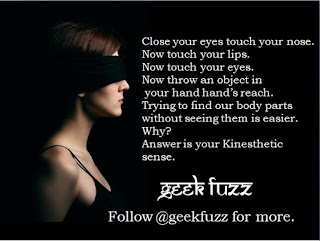Why all Chinese look same to you? OR Why do you fail to recognize people from other races?
Did you ever wonder why all these people from different races look same to you?
Ever had a question in your head why these Chinese look same? Why can’t I differentiate between Koreans Negros and Chinese people? Like how do they even recognize themselves when they all look twins from same mother even though they aren’t actually?
I have answers to all of these questions of yours!
So, here I have straight answer to you in one line and studies related to the proofs?
This is due to “Cross race effect” as they say it, which makes it difficult to recognize people from other races. You can say that an Asian can fail to recognize say an African, Chinese, Korean, etc; take any into consideration. This topic is seriously in question for hundreds of years.
So why does it happen?
It could be because we have more past experiences with members of our race, we spend our lives in differentiating faces of people with our community, so we find it easy in remembering faces of our people.
For example let’s say I’m an Indian particularly north Indian so it will be easy for me in remembering and differentiating faces of people from north India, if somebody would ask me to differentiate between people of east India or South India I would eventually fail at it.
e.g in the image below do you think their facial features are strikingly similar and a normal person with zero knowledge of K-pop won't be able to differentiate these girls.
I’m not saying that it is something like I would/ you would never be able to learn I am rather saying it a skill that a person learn from his/her childhood, Facial recognition is a learnable skill, one can learn it by living with people of particular race or by watching them virtually by means of movies or say short videos on YouTube but as a human you obviously will not be able to learn it in one day, it is going to take time and efforts.
What is this Cross race effect?
Tendency to more easly recognize faces that are most familiar.
In social psychology, the cross-race effect is described as the "ingroup advantage". In other fields, the effect can be seen as a specific form of the "ingroup advantage" since it is only applied in interracial or inter-ethnic situations, whereas "ingroup advantage" can refer to mono-ethnic situations as well.
I would now lead to one of the studies done over our question.
Heather Lucas and her colleagues of the Cognitive Neuroscience Laboratory at Northwestern University
recruited 18 white female undergraduates and showed them colour photographs of
the faces of white, black, Hispanic and east and south Asian adult men,
presented in random order on a computer screen. The participants were asked to
pay close attention to the faces and try to remember them for a recognition
test. Afterwards, they were shown some of the same Participants wore an elastic electroencephalography (EEG)
cap containing 59 electrodes, so that the electrical activity of their brains
could be recorded throughout the experiment. The researchers focused on two
event-related potentials, or neural responses associated with particular events
– the N200 potential, which is recorded from the frontal lobes and associated
with encoding of novel visual stimuli, and the P2 potential in the junction of
the occipital and parietal lobes, which is thought to be sensitive to the
characteristic features of a stimulus and, in this case, may be associated with
extraction of facial features.
As
expected, the participants recognised same-race faces more accurately than
other-race faces, and this corresponded with larger N200 and P2 responses
during the first phase of the experiment. Similarly, other-race faces that were
accurately recognised evoked larger N200 and P2 responses than those which were
later forgotten. Moreover, the researchers could predict which faces would be
accurately recognised during the recall phase from the brain responses alone.
faces again, as
well as some new ones, and asked to indicate whether or not they had seen each
one before.
Why
were some of the other-race faces recognised more accurately than others? The
researchers hypothesised that some might be more distinctive than others,
leading to better encoding of unique facial features, and ran a second
experiment to test the idea. This time, they showed the same photos to 96
different white females, and asked them to rate how distinctive, stereotypical
and approachable each one was, on a scale of one to five. Afterwards, the
participants performed the same face recognition test as in experiment one.
In
general, other-race faces were rated as being more stereotypical than same-race
faces, but those perceived to be more distinctive were rated as less
stereotypical. Faces expressing a positive emotion were rated as more stereotypical
and approachable, regardless of race. Not surprisingly, the researchers found a
relationship between distinctiveness ratings and accuracy of recognition – the
more distinctive a face, the more likely it was to be accurately recognized
later on.
Analysis
of the electrophysiological data revealed that the other-race faces rated as
being less stereotypical or more distinctive evoked larger N200 and P2
responses, compared to other-race faces that were rated as less distinctive or indistinctive.
By contrast, stereo typicality ratings of same-race faces were not reflected in
the neural responses.
IF YOU LIKED BY BLOG PLEASE SUBSCRIBE, LEAVE COMMENTS IN COMMENT BOX.
INSTAGRAM HANDLE: @geekfuzz
Written by : GEEK FUZZ
Refrences:







Fascinating
ReplyDeleteThank you
Delete